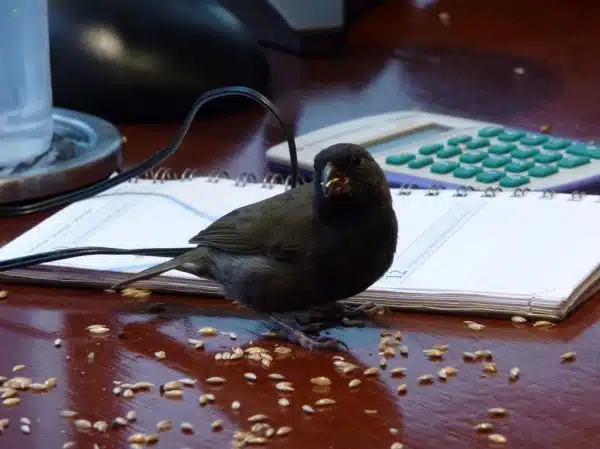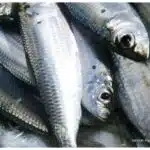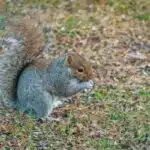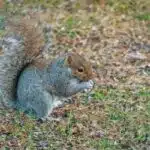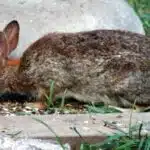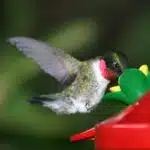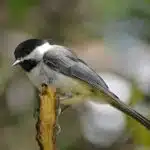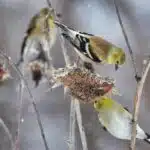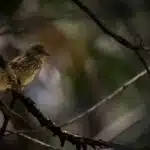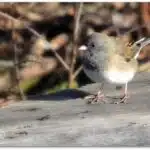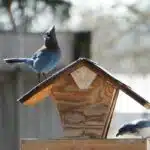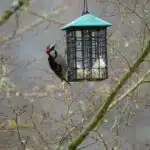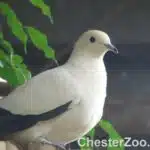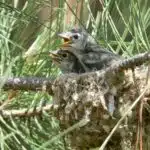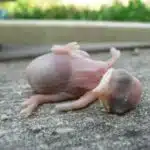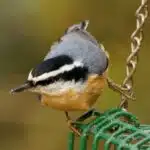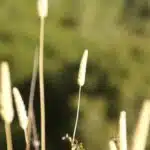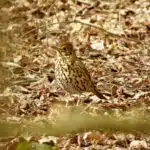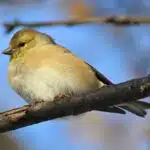As an avian nutrition expert, it is crucial to understand the importance of providing the right kind of birdseed for backyard birds. Feeding the birds in your yard is not only a fulfilling experience but also provides essential nutrients that help birds thrive and survive. However, choosing the best birdseed can be challenging with so many options available in the market.
The first step in choosing birdseed is to understand the dietary needs of different species of birds. Birds have different feeding habits and require specific nutrients to maintain their health. Therefore, it is essential to select a birdseed that meets their nutritional requirements. In this article, we will discuss how to choose the best birdseed for your backyard birds based on their feeding habits and nutritional needs. We will also provide tips on how to store birdseed properly and avoid common mistakes that can harm your feathered friends.
Understanding The Nutritional Needs Of Backyard Birds
The nutritional needs of backyard birds are diverse and complex, and understanding what they require is essential for maintaining their health. Providing a balanced diet with appropriate nutritional benefits can help promote the well-being of these feathered friends. While each species has its own unique feeding behavior, there are some general guidelines to follow when choosing the best birdseed for your backyard birds.
One critical aspect to consider is the type of food that provides a variety of nutrients. A diet rich in protein, fat, and carbohydrates can help support energy levels, growth, and overall health. For instance, certain types of seeds have high fat content that is beneficial for birds during colder months. Additionally, providing fresh fruits and vegetables can supplement their diet with vitamins and minerals that are not found in seed mixes.
Feeding behavior also plays a crucial role in selecting the right birdseed. Ground-feeding birds like doves and sparrows prefer seed blends that consist mainly of millet or cracked corn. Whereas perching birds such as finches and chickadees enjoy sunflower seeds or nuts that can be easily accessed from feeders or suspended wire mesh cages. Understanding which species visit your backyard will help you determine what type of birdseed to purchase to attract specific types of birds.
Understanding the nutritional requirements and feeding behaviors of backyard birds is necessary for their survival in urban environments. In the following section, we will discuss different types of birdseed available on the market today that cater to specific species’ dietary needs while keeping their preferences in mind.
Different Types Of Birdseed
When it comes to choosing the best birdseed for your backyard birds, there are several different types available. Seed blends are a popular choice and consist of a mix of seeds such as sunflower, safflower, millet, and cracked corn. These blends are great for attracting a variety of bird species to your yard. Pelleted options are also available and can be a good choice for those who want to minimize mess as they produce less waste than traditional seed mixes.
For those looking for organic choices, there are many non-organic options available on the market. While non-organic options may not be certified organic, they are still free from pesticides and other harmful chemicals. Organic choices tend to be more expensive than non-organic options, but they may provide added health benefits due to their lack of chemical additives.
It’s important to note that different species of birds have different dietary needs. Some birds prefer certain types of seeds over others. For example, finches love thistle seed while cardinals prefer sunflower seeds. Understanding the dietary preferences of the birds in your area can help you choose the best birdseed for them. In the next section, we will explore the benefits of using sunflower seeds in your bird feeders and how they can attract different species of birds to your yard.
Sunflower Seeds
Sunflower seeds are a popular choice for backyard bird feeders, and for good reason. They are packed with essential nutrients that birds need to stay healthy. High in protein and fat, sunflower seeds provide the energy birds require to maintain their body temperature during cold weather. Additionally, they contain vitamins E and B6, which help support immune function and overall health.
To prepare sunflower seeds for your backyard birds, start by selecting high-quality seeds. Look for seeds that are plump, with no signs of mold or insect damage. Sunflower seeds can be offered whole or hulled; hulled seeds are easier for birds to eat but may be more expensive. If you choose to offer whole sunflower seeds, consider placing them in a mesh feeder to prevent waste.
When offering sunflower seeds to your backyard birds, it’s important to monitor how much seed they consume each day. While these seeds are a nutritious option, they should be offered in moderation as part of a balanced diet. Too many sunflower seeds can lead to obesity and other health problems in birds. To avoid overfeeding, offer small amounts of seed at a time and refill the feeder as needed throughout the day.
Moving forward with our discussion on birdseed options for your backyard friends, let us now delve into the nutritional benefits of safflower seeds and how best to prepare them for consumption by your feathered guests.
Safflower Seeds
- Safflower seeds are a nutritious food source for backyard birds, providing a balanced ratio of proteins, carbohydrates, and fats.
- A variety of feeder types can be used to disperse safflower seed, such as platform feeders, hoppers, and tube feeders.
- Suet feeders are also suitable to distribute safflower seed, though they may be more appropriate for larger birds given the size of the seed.
- Safflower seeds are preferred by many backyard birds, including cardinals, chickadees, titmice, grosbeaks, and jays.
- By offering safflower seed, birders can attract these species of birds to their backyard, as well as increase the diversity of bird species.
- To ensure optimal nutrition for backyard birds, safflower seed should be offered in combination with other birdseed, such as sunflower seed, millet, and cracked corn.
Nutritional Benefits
As an avian nutrition expert, it is essential to consider the health benefits of birdseed when choosing the right one for your backyard birds. Safflower seeds are an excellent option as they are rich in nutrients and have a high calorie content. They contain essential fatty acids that are beneficial for birds’ overall health, including maintaining healthy feathers and skin.
Birds’ feeding habits can also determine the type of seed they prefer. Safflower seeds are ideal for birds that enjoy cracking open shells to reach the seed inside, such as finches or cardinals. Additionally, safflower seeds have a thick outer shell that squirrels and other rodents find difficult to crack open, making them less likely to compete with birds for food.
In conclusion, choosing safflower seeds as part of your backyard bird feed mix can provide nutritional benefits while accommodating different feeding habits. As a responsible bird feeder, it’s important to offer variety in your feeders to attract different species of birds and ensure they receive the necessary nutrients for their health and well-being.
Feeder Types
Safflower seeds are an excellent option for backyard birds due to their rich nutrient content and high calorie value. However, choosing the right feeder design can enhance the feeding experience for birds while keeping them healthy. Tube feeders are a popular choice among bird enthusiasts because they can accommodate different seed sizes and keep food dry and fresh. Additionally, tube feeders have perches that allow birds to rest while eating and prevent squirrels and other rodents from accessing the food.
Another feeder type that is becoming increasingly popular is platform feeders. These feeders provide ample space for larger bird species such as doves or jays to feed comfortably. Platform feeders also have the added advantage of being easy to clean, which is essential for maintaining good hygiene in your backyard bird feeding station. Regular cleaning of feeders ensures that leftover seeds or debris do not accumulate, preventing the spread of diseases.
When choosing a feeder design, it’s important to consider the type of birds you want to attract. For example, if you want to attract finches or cardinals that prefer cracking open shells, then a hopper feeder with a tray may be ideal since it allows these birds to access safflower seeds more efficiently. Ultimately, having a mix of different feeder types will not only cater to various bird species but also provide an aesthetically pleasing display in your backyard while promoting bird health and well-being.
Attracting Birds
Creating habitats that attract birds is an essential part of avian nutrition and well-being. Backyard bird feeding stations are an excellent way to provide supplemental food and water sources for birds while also creating a habitat that encourages their presence. One of the most crucial factors in attracting birds is the availability of nutrient-dense foods such as safflower seeds, which are rich in protein, fat, and fiber. Using bird feeders to offer these seeds can help attract a wide variety of bird species to your backyard.
When it comes to attracting birds, it’s important to choose the right feeder design and placement. For example, hanging feeders at different heights can accommodate different bird species’ feeding habits while also preventing larger predators from accessing the food. Additionally, placing feeders near trees or shrubs provides birds with natural cover while they’re feeding and resting. Creating a diverse habitat through multiple feeder types, natural vegetation, and clean water sources helps ensure a healthy bird population in your backyard.
In summary, using safflower seeds in combination with appropriate bird feeder designs can attract a diverse range of bird species to your backyard while promoting their health and well-being. By creating habitats that provide ample food sources, shelter, and water, you can enjoy watching various avian species thrive in your outdoor space. Remember to keep your feeders clean regularly to prevent disease transmission and ensure the best possible conditions for our feathered friends.
Nyjer Seeds
Nyjer seeds, also known as thistle seeds, are a popular choice among backyard bird enthusiasts. These tiny black seeds are highly nutritious and provide birds with essential fats and oils that aid in their overall health and well-being. Choosing quality Nyjer seeds is important for attracting a variety of finches, such as American Goldfinches, Purple Finches, and House Finches.
When purchasing Nyjer seeds, it is important to look for fresh and clean seeds. Old or stale Nyjer seeds can lose their nutritional value and may even be harmful to birds. Additionally, it is crucial to avoid purchasing Nyjer seeds that have been treated with chemicals or pesticides. These can pose a serious threat to the health of birds that consume them.
There are several purchasing options when it comes to buying Nyjer seeds. Many pet stores carry bags of high-quality Nyjer seeds specifically designed for bird feeding. However, these can often be more expensive than other options. Alternatively, some bulk food stores may carry Nyjer seeds at a lower price point. It is important to compare prices and read product labels carefully to ensure that the chosen option meets the necessary quality standards.
Moving on from selecting Nyjer Seeds, an equally popular option among bird enthusiasts is millet seed.
Millet Seeds
As we move on from discussing Nyjer seeds, let us now explore the benefits of incorporating Millet seeds into your backyard bird feeding routine. Millet seeds are a popular choice among birds such as sparrows, finches, and doves due to their small size and mild taste. These seeds are rich in essential nutrients that can help support the growth of healthy feathers and overall avian health.
One of the most significant benefits of Millet seeds is their high protein content. This nutrient is essential for birds as it helps build strong muscles and supports healthy organ function. Additionally, Millet seeds contain a variety of minerals such as calcium, iron, and potassium that can help keep your feathered friends healthy and active.
If you’re looking for ways to incorporate Millet seeds into your bird feeding routine beyond just providing them in a feeder, there are various recipes available online. For instance, you can mix Millet seeds with other types of birdseed or create a homemade “bird cake” by combining ingredients like peanut butter, oats, and dried fruit with Millet seeds. These recipes provide an exciting way to add variety to your backyard birds’ diet while also offering additional nutritional benefits.
As we have seen, incorporating Millet seed can be an excellent way to supplement the nutritional needs of your backyard birds. However, it’s worth noting that these seeds should not make up the entirety of their diet but rather serve as one component alongside other types of birdseed such as cracked corn, which we will discuss further in the next section.
Cracked Corn
Cracked corn is a popular type of birdseed that is commonly found in backyard bird feeding stations. It is made by removing the hard outer layer of corn kernels, leaving behind the softer inner portion. This type of feed has many benefits for birds as it is rich in carbohydrates, proteins, and essential nutrients like vitamin B and iron.
One of the best ways to offer cracked corn to backyard birds is by placing it on a flat platform feeder or sprinkling it on the ground. This allows ground-feeding birds like sparrows and doves to access it easily. Another way to offer this feed is by mixing it with other types of birdseed like sunflower seeds or millet. This will attract a wider variety of birds to your yard.
It’s important to note that cracked corn should not be the only type of birdseed offered to backyard birds. While it does have its benefits, an exclusive diet of cracked corn can lead to nutritional deficiencies in some bird species. Therefore, it’s recommended to provide a diverse mix of birdseeds and other foods like fruits and nuts. With these considerations in mind, offering cracked corn as part of a balanced diet can be a great addition to any backyard bird feeding station.
As we’ve discussed the many benefits of offering cracked corn as part of a varied diet for backyard birds, it’s important not to overlook another great option: mealworms. These protein-rich treats are especially popular among insect-eating birds like bluebirds and warblers. In the next section, we’ll explore the benefits of mealworms in more detail and discuss how you can incorporate them into your backyard feeding routine.
Mealworms
While cracked corn is an excellent option for larger birds, it may not be suitable for all backyard birds. For those who are looking to attract insectivorous birds such as bluebirds or wrens, mealworms are a great alternative. Mealworms are the larvae of darkling beetles and are packed with protein and fat. They are easy to prepare and can be purchased live or dried.
One of the benefits of offering mealworms to backyard birds is that they are a natural food source for many bird species. Insectivorous birds require high amounts of protein in their diet, especially during breeding season when they need to feed their young. Mealworms provide this essential nutrient in abundance and can help support healthy growth and development in fledglings. Additionally, offering mealworms can attract a wider variety of bird species to your backyard.
Preparation of mealworms is straightforward and can be done using a shallow dish or feeder specifically designed for mealworms. Live mealworms can be stored in the refrigerator to slow their metabolism until they are ready to be fed. Dried mealworms do not require refrigeration but should be soaked in water for 10-15 minutes before feeding to ensure that they are soft enough for smaller birds to consume.
Moving onto the next type of birdseed, fruit and nuts offer a different set of benefits for backyard birds. These types of food provide essential vitamins and minerals that may not be present in other types of seed mixes. Additionally, fruit offers a natural sweetness that many bird species find appealing. Let’s explore some popular options for fruit and nut offerings in the next section.
Fruit And Nuts
Using Fruit and Nuts: Benefits and Drawbacks
Birds are known to enjoy a variety of fruits and nuts, which can be an excellent addition to their diet. Fruits such as apples, pears, berries, and grapes are rich in vitamins and antioxidants that can help improve the bird’s overall health. Similarly, nuts like peanuts, almonds, walnuts, and pecans are high in protein and healthy fats that provide the birds with essential nutrients.
However, while feeding fruits and nuts can be beneficial for birds, it also has some drawbacks. For instance, some birds may develop a dependency on these foods over time. This dependence can lead to them neglecting other important food sources that they need for a balanced diet. Additionally, certain fruits like raisins or grapes should not be fed in large quantities as they contain higher levels of sugar compared to other fruits.
To ensure that your backyard birds receive the necessary nutrients from fruits and nuts without developing dependencies or experiencing any adverse effects, it is important to feed them in moderation. Offer different types of fruit on a rotating basis instead of just one kind consistently. Likewise, make sure that you’re feeding unsalted nuts as too much salt can be harmful to the birds’ health.
In the next section on mixing your own birdseed, we will discuss how you can incorporate these nutritious ingredients into your birdseed mix along with other complementary components to provide optimal nutrition for your feathered friends.
Mixing Your Own Birdseed
A wise man once said, “We are what we eat.” This statement not only applies to humans but also to our feathered friends. The quality of the seed that you mix for your backyard birds is essential in maintaining their health and vitality. Therefore, it is crucial to choose the right type of seed and use appropriate mixing techniques.
Seed quality determines the nutrient composition that birds receive from the food they eat. When choosing seeds, opt for fresh ones with no signs of mold or damage caused by pests. Avoid buying birdseed from bulk bins as it may contain contaminants or stale seeds. Instead, purchase seed packages that indicate the date of manufacture and have an expiration date.
Mixing techniques play a vital role in ensuring that birds consume a balanced diet. Here are three factors to consider when mixing your own birdseed:
- Variety – Include different types of seeds such as sunflower, safflower, millet, and thistle to provide diverse nutrients.
- Proportions – Mix seeds in proper proportions to achieve a balance between high-fat content (sunflower seeds) and low-fat content (millet seeds).
- Consistency – Ensure the consistency of seed mixes with each batch by using standardized measuring cups.
By following these tips on seed quality and mixing techniques, you can create a healthy birdseed mix for your backyard birds. However, proper storage is equally important for maintaining freshness and preventing contamination. In the next section, we will discuss how to store birdseed correctly to ensure its longevity and nutritional value.
Properly Storing Birdseed
After mixing your own birdseed, it is important to properly store it in order to prevent spoilage and ensure that your backyard birds are receiving fresh and nutritious food. Proper storage begins with selecting the right container; airtight containers, such as plastic or metal bins with tight-fitting lids, are ideal for keeping birdseed fresh and dry. It is also important to store birdseed in a cool and dry location, away from direct sunlight and moisture.
One common mistake that many backyard bird enthusiasts make is storing large quantities of birdseed for long periods of time without using it up. This can result in spoilage due to exposure to air, heat, and humidity. To prevent this from happening, only purchase the amount of birdseed that you will use within a few weeks or months at most. Additionally, regularly inspect stored birdseed for signs of mold or other forms of spoilage.
Another way to prevent birdseed spoilage is by avoiding contamination from rodents or insects. Store birdseed off the ground and away from walls where pests can easily access it. Consider placing containers on shelves or hooks instead. You may also want to invest in pest-proof containers or add natural deterrents such as peppermint oil or bay leaves near the storage area.
In summary, proper storage is crucial for maintaining the freshness and nutritional value of your backyard birds’ food supply. By selecting the right container, storing seed in a cool and dry location, purchasing only what you need, inspecting seed regularly, and protecting against pests you can help ensure that your feathered friends receive high quality nutrition year-round. In the next section we will discuss common mistakes to avoid when choosing commercial birdseed blends.
Common Mistakes To Avoid
Just like a chef choosing the right ingredients for their dish, selecting birdseed requires careful consideration. When it comes to feeding birds in your backyard, there are common mistakes that should be avoided to ensure you are providing nutritious food that is also cost-effective.
One mistake to avoid is buying birdseed mixes with filler seeds such as red milo, sorghum, and wheat. These seeds are not preferred by most backyard birds and will lead to waste as they are often left uneaten. Instead, opt for seed mixes that contain sunflower seeds, nyjer (thistle) seed, and cracked corn. These options provide a variety of nutrients and are preferred by a wide range of bird species.
Another mistake is purchasing cheap birdseed from discount stores or online retailers. Although it may seem like a good deal at first glance, these low-quality seeds often contain fillers and can be contaminated with mold or insects. Investing in high-quality birdseed may cost more upfront but will save you money in the long run by avoiding waste and attracting more desirable bird species to your yard.
To avoid wasting birdseed, use feeders that allow birds to access only what they need rather than open trays or platforms where seed can easily spill out or get wet. Regularly clean feeders to prevent mold growth and contamination. By taking these steps you will not only save money but also help promote the health of your backyard birds.
Moving on from avoiding common mistakes when selecting birdseed, let’s explore how to attract specific species of birds to your yard.
Attracting Specific Species Of Birds
If you are interested in attracting specific bird species, it is important to understand their unique dietary needs. For instance, if you want to attract hummingbirds, it is recommended that you provide them with a nectar solution made from four parts water and one part white granulated sugar. Ensure that the solution is changed frequently to prevent fermentation and bacterial growth. Additionally, planting native flowers such as Bee Balm or Butterfly Weed can also attract hummingbirds.
Encouraging blue jays to visit your backyard requires a bit more effort. Blue Jays prefer nuts and seeds, so providing them with peanuts or sunflower seeds can be effective. However, they are also known for their love of insects such as mealworms and caterpillars. Consider adding a mealworm feeder to your backyard setup to attract these birds.
Lastly, if you are interested in attracting a variety of bird species, consider offering a diverse range of food options. This can include suet for woodpeckers and other insect-eating birds, thistle seed for finches, and cracked corn for ground-feeding birds like doves and sparrows. Providing different types of food will not only attract a wider range of bird species but will also help ensure that all birds have access to the nutrients they need.
Now that you know how to attract specific bird species with the right food choices, let’s move on to discussing how to feed birds in different seasons. Understanding seasonal changes and their impact on bird feeding habits is crucial in ensuring that backyard birds receive the necessary nourishment throughout the year.
Feeding Birds In Different Seasons
Attracting specific species of birds to your backyard can be a rewarding experience for bird enthusiasts. However, it is essential to provide the right type of food for each species. Seasonal offerings are an important consideration when choosing birdseed for your feathered friends. Birds have different feeding preferences depending on the time of year, and providing them with suitable food can attract more birds to your yard.
In winter, birds require high-energy foods such as suet and black oil sunflower seeds to help them stay warm. Additionally, offering fruits like berries or apples can provide additional nutrients that are not readily available during colder months. In spring and summer, birds prefer insects and worms as their primary source of protein; however, they also enjoy seed mixes that contain millet or cracked corn. During fall migration, birds need extra energy to fuel their long journeys southward. Providing high-fat foods like peanuts or safflower seeds is a great way to attract migrating birds.
Feeding preferences vary between bird species, and it is essential to know what types of food each bird prefers before stocking up on seed mixes. For instance, finches love nyjer seed while woodpeckers prefer suet cakes. Hummingbirds require nectar feeders filled with a mixture of water and sugar. Knowing what types of food different bird species prefer can help you create a feeding station that will attract the most diverse range of birds possible.
Enjoying the beauty of backyard birds is a fulfilling activity for people who have a desire to serve their feathered friends. By understanding seasonal offerings and feeding preferences of different bird species in your area, you can create a welcoming environment that attracts many different kinds of birds throughout the year. Providing the right type of food at the right time will ensure that your backyard becomes a haven for avian visitors who will delight you with their songs and colorful plumage all year round!
Enjoying The Beauty Of Backyard Birds
Backyard birdwatching can be an incredibly rewarding experience for those who enjoy the beauty of nature. One way to attract a variety of birds to your backyard is by creating bird friendly landscaping, which includes providing a variety of food sources. Choosing the right birdseed is essential to ensure that you are providing your feathered friends with the nutrients they need to thrive.
When selecting birdseed, it’s important to consider the types of birds you want to attract. Different species have different dietary needs, so it’s best to choose a mix that caters to their preferences. Some common ingredients found in birdseed include sunflower seeds, millet, cracked corn, and peanuts.
Here are five things to keep in mind when choosing the best birdseed for your backyard birds:
- Avoid cheap mixes that contain fillers like wheat or oats.
- Opt for fresh seed rather than bulk bags that may have been sitting on store shelves for months.
- Consider purchasing seed blends specifically designed for certain types of birds, such as finches or woodpeckers.
- Provide a mix of seed and suet cakes to offer a diverse range of nutrients.
- Keep your feeder clean and dry to prevent mold growth and bacteria buildup.
By following these guidelines, you can create an inviting space for backyard birds while ensuring they receive proper nutrition. Remember that attracting birds isn’t just about feeding them – it’s about fostering an environment where they feel safe and welcome. With some careful planning and attention, you can enjoy the beauty of these feathered friends year-round.
Conclusion
Backyard bird feeding is a popular and enjoyable activity for many bird lovers. However, choosing the right birdseed can be overwhelming due to the variety of options available in the market. As an avian nutrition expert, it is important to understand the nutritional needs of backyard birds before selecting a birdseed.
Different types of seeds such as sunflower, safflower, and nyjer provide different nutritional benefits to birds. Sunflower seeds are high in protein and fat, which make them a favorite among many bird species. Safflower seeds are rich in unsaturated fats and attract birds that prefer a milder taste. Nyjer seeds are high in oil content and attract finches and other small songbirds.
It is essential to avoid common mistakes such as providing low-quality or contaminated seed, overfeeding, or placing feeders in unsafe locations. Attracting specific species of birds requires knowledge of their preferred food sources and habitat requirements. Feeding birds during different seasons also requires consideration of changes in their nutritional needs.
One interesting statistic is that over 55 million Americans participate in backyard bird feeding activities annually (Cornell Lab of Ornithology). This highlights the importance of understanding avian nutrition to ensure that backyard birds receive adequate nutrition for their survival and well-being. By choosing the best birdseed for your backyard birds, you can enjoy the beauty of these feathered friends while contributing to their health and vitality.
Image Credits
- “-‘You crunch the numbers, I’ll crunch the birdseed’” by JunCTionS (featured)

